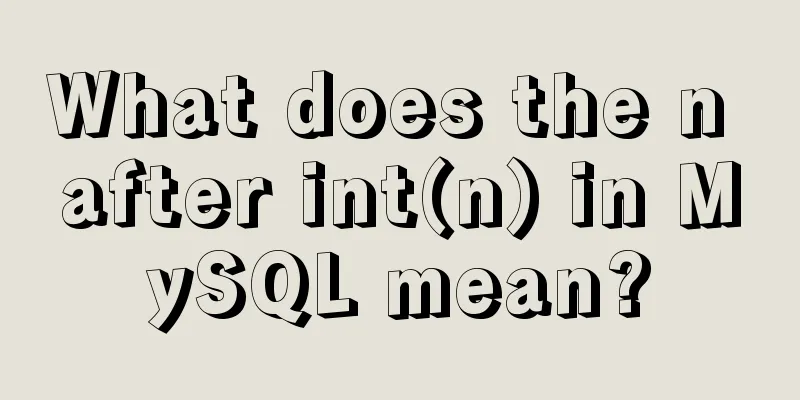Table of contents- 1. Scene loading
- 2. Find Node
- 1. Node search
- 2. Other node operations
- 3. Stop the playback action and timer
- 3. Node attribute settings
- 4. Node Action
- 5. Timer
- 6. Event Monitoring
- 7. Define global variables
- 8. Resolution
- 9. Audio Control
- 10. Equipment judgment
- 11. Listening and Emitting Events
- 1. Touch monitoring
- 2. Mouse monitoring
- 3. Input box monitoring
- 4. Property change monitoring
- 5. ScrollView control monitoring
- 6. User-defined events
- Replenish:
1. Scene loading- cc.director.loadScene('scene name');//scene jump
- cc.director.preloadScene('scene name');//Preload scene
- cc.director.getScene(); //Get the current scene
2. Find Node 1. Node search- node = cc.find("Canvas/bg"); //Path access node performance consumption is relatively large
- this.node.getChildByName('name'); //Getting child nodes by name consumes less performance
- node.getComponent(cc.Label) //Get the label attribute value on the node
- this.node; //Current script node
- this.node.parent; //parent node
- this.node.getChildByTag(100); //Get child nodes by tag
- cc.find("game/test",this.node); //Get the node by the path under the specified node
- this.node.children; //Get all child nodes
- node.getChildren(); //Get all child nodes
- this.node.childrenCount; //Get the number of child nodes
- node.getChildrenCount(); //Get the number of child nodes
- cc.director.getScene(); //Get the main node of the scene
- var sprites = this.node.getComponentsInChildren(cc.Label); //Recursively search for components of the specified type in itself and all child nodes
2. Other node operations- cc.instantiate(node);//clone node
- this.node.parent = cc.find('Canvas'); //Bind parent node
- this.node.addChild(nodeName,zIndex,tag); //Add child nodes, you can set the level and tag
- this.node.removeChild(nodeName); //Remove child node
- this.node.removeChildByTag (nodeTag); //Remove child nodes by tag
- this.node.destroy();//Destroy the node
- this.node.isValid; //Determine whether the node is available
- this.node.removeChild(newNode); //Remove the specified child node in the node
- this.node.removeChildByTag(100); //Remove the specified child node in the node by tag
- this.node.removeAllChildren(); //Remove all child nodes
- this.node.destroyAllChildren(); //Destroy all child nodes
3. Stop the playback action and timer this.node.cleanup(); //Stop all playing actions and timers 3. Node attribute settings- node.getPositionX(); or getPositionY() //X-axis or Y-axis coordinate
- node.getScaleX(); or getScaleY() //X-axis or Y-axis scaling
- node.x = 100; //Set the node x-axis coordinate
- node.y = 100; //Set the node y-axis coordinate
- node.setPosition(x,y); //Set node coordinates
- node.rotation = 90; //Set the node rotation angle
- node.scaleX = 2; //Set the node x-axis scaling factor
- node.scaleY = 2; //Set the node y-axis scaling factor
- node.setScale(2); //Set the overall scaling factor of the node
- node.width = 100; //Set the node width
- node.height = 100; //Set the node height
- node.setContentSize(100, 100); //Set the width and height of the node
- node.anchorX = 1; //Set the node x-axis anchor point coordinates
- node.anchorY = 0; //Set the node y-axis anchor point coordinate
- node.setAnchorPoint(1, 0); //Set the node anchor point coordinates
- node.opacity = 255; //Set the node transparency (0-255)
- node.setOpacity(20); //Set node transparency (0~255)
- node.color = new cc.color(100,100,100,255); //Set node color (R, G, B, transparency)
- cc.isValid(this.label.node) //Determine whether the node exists
- node.active = false; //Close the node (hide the node)
Resident Node- cc.game.addPersistRootNode(myNode); //Permanent node (global variable)
- cc.game.removePersistRootNode(myNode); //Cancel the resident node
4. Node Action- cc.show()//Show immediately
- cc.hide () //Hide immediately
- cc.toggleVisibility()//Switch between visibility and hiding
- cc.fadeIn(1) //fade effect
- cc.fadeOut(1) // fade out effect
- cc.delayTime(1) //Wait for 1 second
- node.runAction(cc.moveTo(1,0,0)); //Move to the current node (time (s), X-axis coordinate, Y-axis coordinate)
- node.runAction(cc.scaleTo(1,0.7,0.8)); //Scale to the current multiple node (time (s), X-axis multiple, Y-axis multiple)
- node.runAction(cc.rotateTo(1,160,160)); //Rotate to the specified angle (time (s), X-axis angle, Y-axis angle)
- node.runAction(cc.skewTo(1,5,-5)); //Change node tilt (time (s), X-axis tilt, Y-axis tilt)
- node.runAction(cc.fadeTo(2,0)); //Change the transparency of the current node (time (s), transparency)
- node.runAction(cc.tintTo(2,255,255,0)); //Change the current node color (time, R, G, B)
- node.stopAllActions(); //Stop all actions
- var action = cc.moveTo(2, 100, 100); // Create an action (moveTo means moving)
- node.runAction(action); // Execute the specified action
- node.stopAction(action); // Stop the specified action
- cc.sequence(action1,action2); //Execute in sequence
- cc.spawn(action1, action2); //Execute simultaneously
- cc.repeatForever(cc.sequence(action1,action2)); //Repeated action
5. Timer
start() {
// Scheduled start // Start after 2S this.scheduleOnce(() => {
cc.log("scheduleOnce")
}, 2)
// Frequency + 1 delay this.schedule(() => {
cc.log("schedule")
}, 1, 3, 5)
// Execute forever let one = this.schedule(() => {
cc.log("schedule")
}, 1, cc.macro.REPEAT_FOREVER, 2)
// Clear all schedules this.scheduleOnce(() => {
cc.log("scheduleOnce")
this.unscheduleAllCallbacks()
}, 5)
let callb = function () {
cc.log("callb")
}
this.schedule(callb, 0.5) //Default is to execute forever this.scheduleOnce(() => {
cc.log("scheduleOnce")
this.unschedule(callb)
}, 2)
}, 6. Event Monitoring (start: 'touchstart', move: 'touchmove', end: 'touchend', cancel: 'touchcancel')
node.on('touchstart',function(event){
this.doSomething();
},this);- event.getID(); //Get the ID of the contact
- event.getLocationX(); //Get the coordinate X of the touch point
- event.getLocationY(); //Get the Y coordinate of the touch point
cc.eventManager.addListener({
event: cc.EventListener.KEYBOARD/TOUCH_ONE_BY_ONE,myfunction},self.node); 7. Define global variables window.global = "blobal string"; //Global variables can be defined in any script
window.G = {
a: null,
b: null,
}; Global variables can be accessed in any script (provided the script has been executed)
Ga = 0;
Gb = 0;
var something = require('something');
cc.game.addPersistRootNode(myNode); //Permanent node, must be located at the root node of the hierarchymodule.exports = {
config: 123
} 8. Resolution Get device resolution - var equipment = cc.director.getWinSizeInPixels()
- var equipmentW = equipment.width
- var equipmentH = equipment.height
- cc.view.getCanvasSize().width; //Get the width of the device resolution
- cc.view.getCanvasSize().height; //Get the height of the device resolution
- cc.director.setDisplayStats(true);//Display frame information
9. Audio Control cc.audioEngine.playMusic(this.BGAudio,true);//Play music (true loop)
cc.audioEngine.stopMusic()//Stop playing
cc.audioEngine.playEffect(this.ClickAudio,false);//Play the sound effect (false means only play once)
cc.audioEngine.stopEffect(sound effect variable name); //Stop the specified sound effect (the sound effect needs to be assigned to the variable first)
cc.audioEngine.AllEffects(); //Stop all sound effects
cc.audioEngine.setMusicVolume(parameter); //Set the volume of background music (range is 0 to 1)
cc.audioEngine.setEffectsVolume(parameters); //Set the volume of the sound effects (range is 0 to 1) 10. Equipment judgment- cc.sys.isNative //Is it local?
- cc.sys.isBrowser //Is it a web page?
- cc.sys.isMobile //Is it a mobile system?
- cc.sys.platform //The running platform
- cc.sys.language //The language of the current running system
- cc.sys.os //Currently running system
- cc.sys.OS_IOS //Is it an IOS system?
- cc.sys.OS_ANDROID //Is it an Android system?
- cc.sys.OS_WINDOWS //Is it a Windows system?
- cc.sys.openURL('Http://www.baidu.com'); //Open the web page
11. Listening and Emitting Events- this.node.pauseSystemEvents(true);//Pause node system events
- this.node.resumeSystemEvents(true);//Resume node system events
- this.node.targetOff(this); //Remove all registered events
1. Touch monitoring Start 'touchstart',
Move 'touchmove',
end 'touchend',
Cancel 'touchcancel'
- var pos = event.getLocation(); //Get the coordinates of the touch point (including X and Y)
- var x = event.getLocationX(); //Get the X coordinate of the touch point
- var y = event.getLocationY(); //Get the Y coordinate of the touch point
- var a = event.getID(); //Get the ID of the contact
2. Mouse monitoring Mouse down 'mousedown',
Move to the node 'mouseenter',
Move in the node 'mousemove',
Remove the node 'mouseleave,
'Release the mouse'mouseup'
- event.getScrollY(); //Get the Y axis distance of the scroll wheel, only valid when scrolling
- event.getLocation(); //Get the mouse location object, which contains x and y attributes
3. Input box monitoring Get focus 'editing-did-began',
Text changes 'text-changed',
Lost focus 'editing-did-ended',
Press 'editing-return'
4. Property change monitoring Position 'position-changed',
Width and height 'size-changed',
rotation-changed,
'scale-changed'
5. ScrollView control monitoring 'scrolling',
Stop scrolling 'scroll-ended'
6. User-defined events Listening: this.node.on("custom event name", function(target), this); - this.node.on('event name',function,this);//Register listener
- this.node.emit('event name'); //Send monitoring broadcast
- this.node.off('event name',function,this);//Close monitoring
Self-delivery: emit("event name", [detail]); only you can receive it
onLoad: function () {
// Receiver // Event type, which is a custom string;
// callback function: function(e) {} e--> cc.Event.EventCustom instance this.node.on("pkg_event", function (e) {
console.log("pkg_event", e);
}, this);
// The dispatcher can only pass it to itself and will not pass it upwards this.node.emit("pkg_event", { name: "hanbao" });
}, Bubble delivery: dispatchEvent(new cc.Event.EventCustom("name", whether to bubble delivery));
onLoad: function () {
// Receiver // Event type, which is a custom string;
// callback function: function(e) {} e--> cc.Event.EventCustom instance this.node.on("pkg_event", function (e) {
console.log("pkg_event", e.detail);
}, this);
},
start: function () {
this.node.emit("pkg_event", { name: "hanbao" }); //This will be dispatched to yourself once// //This is dispatched to the global system;
// true/false, true is passed upward, false is not passed upward var e = new cc.Event.EventCustom("pkg_event", true);
e.detail = { name: "haobao" };
this.node.dispatchEvent(e);
}, Replenish:- cc.director.pause();//pause
- cc.director.resume();//Continue
- cc.director.end();//Exit the entire application
- node.getLocalZOrder(); //Level acquisition
- node.setLocalZOrder(1); //Level change
- cc.find('canvas/map' + num) //Read the path with variables
The above is the detailed content of the commonly used knowledge points of CocosCreator. For more information about CocosCreator knowledge points, please pay attention to other related articles on 123WORDPRESS.COM! You may also be interested in:- Detailed explanation of cocoscreater prefab
- How to use resident nodes for layer management in CocosCreator
- How to use CocosCreator for sound processing in game development
- CocosCreator ScrollView optimization series: frame loading
- Detailed explanation of CocosCreator project structure mechanism
- How to use CocosCreator object pool
- How to display texture at the position of swipe in CocosCreator
- Comprehensive explanation of CocosCreator hot update
- CocosCreator classic entry project flappybird
- CocosCreator Universal Framework Design Network
- How to use CocosCreator to create a shooting game
- How to use a game controller in CocosCreator
|










